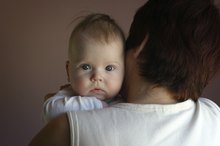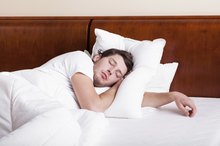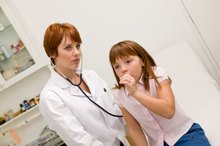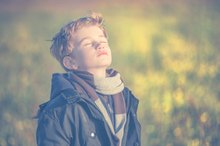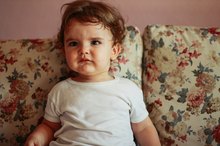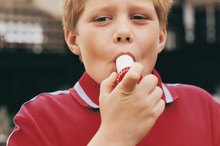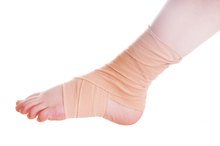What does fact checked mean?
At Healthfully, we strive to deliver objective content that is accurate and up-to-date. Our team periodically reviews articles in order to ensure content quality. The sources cited below consist of evidence from peer-reviewed journals, prominent medical organizations, academic associations, and government data.
- "Medscape General Medicine;” Restless Legs Syndrome in Children; Murali Maheswaran and Clete A. Kushida; June 2006
- "Medscape General Medicine;” Restless Legs Syndrome in Children; Murali Maheswaran and Clete A. Kushida; June 2006
The information contained on this site is for informational purposes only, and should not be used as a substitute for the advice of a professional health care provider. Please check with the appropriate physician regarding health questions and concerns. Although we strive to deliver accurate and up-to-date information, no guarantee to that effect is made.
Restless Sleeping in Children
If your child complains he is still tired when you wake him up after a full night's sleep, or he appears sluggish all day, he may be a restless sleeper. Children between the ages of 5 to 12 need 10 to 11 hours of quality sleep each night, according to KidsHealth.org 1. Restless sleepers don't get quality sleep because they don't stay asleep long enough at one time to fall into a deep sleep.
Problems
Tossing and turning throughout the night can lead to a number of daytime problems. Your child may have a hard time waking up when the alarm sounds. She may be unable to think clearly and may perform poorly in school. She can get tired and cranky throughout the day. Activities that she usually finds easy or enjoyable can become difficult and time-consuming to complete. Her growth may even be affected or her immune system may be compromised, warns KidsHealth.org.
- Tossing and turning throughout the night can lead to a number of daytime problems.
- Your child may have a hard time waking up when the alarm sounds.
Breathing Abnormalities
What are the Causes of a Trembling Head?
Learn More
Restless sleeping can be caused by a number of breathing abnormalities, explains the University of Maryland Medical Center. Breathing abnormalities can cause a child to stop breathing or take shallow breaths while sleeping. These breathing abnormalities can routinely wake a child, preventing him from getting enough deep sleep. The most common breathing abnormality, obstructive sleep apnea, may be caused by obesity, abnormalities in the head or neck, or large tonsils or adenoids. Less common is central hypoventilation syndrome, caused by a problem with the central nervous system.
- Restless sleeping can be caused by a number of breathing abnormalities, explains the University of Maryland Medical Center.
Restless Movements
If your child has a restless night's sleep because she can't calm her body movements, she may have restless legs syndrome or pediatric limb movement disorder. According to KidsHealth.org, in restless legs syndrome, a child feels tingling, itching, burning or a cramping sensations in her limbs. These sensations cause her to move her limbs to rid those feelings. In pediatric limb movement disorder, the jerks and twitches are involuntarily. Both conditions can disrupt a child's sleep.
- If your child has a restless night's sleep because she can't calm her body movements, she may have restless legs syndrome or pediatric limb movement disorder.
- According to KidsHealth.org, in restless legs syndrome, a child feels tingling, itching, burning or a cramping sensations in her limbs.
Diagnosis
Symptoms of Tourette's in Babies
Learn More
While a doctor must diagnose sleep disorders, you can look for signs of breathing problems or restless movements. Signs of breathing problems include snoring and mouth breathing. However, these abnormalities can only be diagnosed after an overnight sleep study in a sleep lab.
For a child to be diagnosed with restless legs syndrome, he must meet the four essential adult criteria and be able to explain these sensations in his own words. According to the article "Restless Legs Syndrome in Children" published in "Medscape General Medicine," the criteria are an urge to move the legs with uncomfortable sensations in the legs, an urge to move the legs that begins or worsens during periods of rest, the urge is worse or only occurs at night, and movement partially or totally relieves the uncomfortable sensations 2.
- While a doctor must diagnose sleep disorders, you can look for signs of breathing problems or restless movements.
- However, these abnormalities can only be diagnosed after an overnight sleep study in a sleep lab.
Remedies
In addition to prescribed medicines and medical equipment, practicing good sleep hygiene can improve sleep quality. Put your child to bed at the same time every night with a soothing bedtime routine. Remove any televisions or computers from the room so your child associates his room with sleep, not play. Likewise, your child should use his bed only for sleep, not for reading or talking on the phone, for example. Limit his intake of caffeine and encourage exercise earlier in the day.
- In addition to prescribed medicines and medical equipment, practicing good sleep hygiene can improve sleep quality.
- Remove any televisions or computers from the room so your child associates his room with sleep, not play.
Related Articles
References
- KidsHealth.org: What Sleep Is and Why All Kids Need It
- "Medscape General Medicine;” Restless Legs Syndrome in Children; Murali Maheswaran and Clete A. Kushida; June 2006
- RLS & kids. Restless Leg Syndrome Foundation [internet].
- Silva GE, Goodwin JL, Vana KD, Vasquez MM, Wilcox PG, Quan SF. Restless legs syndrome, sleep, and quality of life among adolescents and young adults. J Clin Sleep Med. 2014;10(7):779–786. doi:10.5664/jcsm.3872
- Maheswaran M, Kushida CA. Restless legs syndrome in children. MedGenMed. 2006;8(2):79.
- Pigeon WR, Yurcheshen M. Behavioral Sleep Medicine Interventions for Restless Legs Syndrome and Periodic Limb Movement Disorder. Sleep Med Clin. 2009;4(4):487–494. doi:10.1016/j.jsmc.2009.07.008
- National Institutes of Health (NIH). Restless Legs Syndrome.
- Rajaram, S S, et al. Some Children With Growing Pains May Actually Have Restless Legs Syndrome. Sleep. Jun 2004 15;27(4):767-73.
- Ondo, WG. Restless legs syndrome. Neurol Clin - 01-NOV-2005; 23(4): 1165-85, viii.
Writer Bio
Ivy Morris specializes in health, fitness, beauty, fashion and music. Her work has appeared in "Sacramento News and Review," "Prosper Magazine" and "Sacramento Parent Magazine," among other publications. Morris also writes for medical offices and legal practices. She holds a Bachelor of Arts in government-journalism from Sacramento State University.

